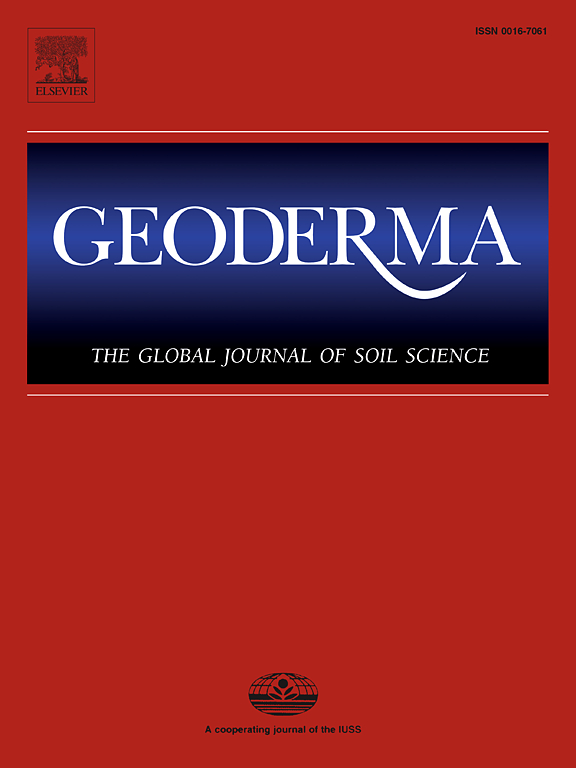三维x射线CT图像中土壤成分的深度学习分割
IF 5.6
1区 农林科学
Q1 SOIL SCIENCE
引用次数: 0
摘要
在x射线CT图像中准确分割土壤成分对于提高我们对土壤结构动力学的理解至关重要。然而,由于土壤成分的x射线衰减重叠,这使得仅基于体素强度的分割变得不可能。在本研究中,我们探索了基于深度学习的语义分割模型nnUNet在土壤科学中的应用潜力。我们在三个具有挑战性的数据集上对nnUNet进行了评估:(1)具有许多灰度值范围重叠的材料类别的复杂土壤结构,(2)噪声图像中的细根,以及(3)在沉积物类型之间灰度值渐变的永久冻土。将nnUNet的性能与其他参考方法(即Ilastik、Rootine v.2和手动阈值设置)进行了比较。Dice得分表明,在所有三个数据集上,模型的总体表现良好。与参考方法相比,nnUNet在数据集1上的性能优于Ilastik。对于数据集2,nnUNet产生的分割比Rootine v2产生的假阳性根更少;然而,这样做的代价是遗漏了肉眼几乎看不见的细根,因此没有注释。在数据集3中,由于体素强度的渐变,我们在注释类时遇到了挑战。我们的研究强调,像nnUNet这样的深度学习模型在复杂土壤结构的分割方面表现良好,可以帮助开发广义分割模型,从而促进土壤结构分析的标准化。为了实现这一目标,增加对多样化和精心策划的注释的访问仍然是必要的。本文章由计算机程序翻译,如有差异,请以英文原文为准。

Deep learning segmentation of soil constituents in 3D X-ray CT images
Accurate segmentation of soil constituents in X-ray CT imagery is critical for advancing our understanding of soil structure dynamics. However, difficulties arise because of the overlapping X-ray attenuation of soil constituents, which makes segmentation based on voxel intensity alone impossible. In this study, we explore the potential of nnUNet, a deep learning-based semantic segmentation model, for applications in soil science. We evaluated nnUNet on three challenging datasets: (1) complex soil structure with numerous material classes with overlapping gray value ranges, (2) fine roots in noisy images, and (3) permafrost with gradual gray value transitions between sediment types. The performance of nnUNet was compared to other reference methods, namely Ilastik, Rootine v.2, and manual thresholding. The Dice scores indicated overall good model performance across all three datasets. Compared to the reference methods, nnUNet outperformed Ilastik on Dataset 1. For Dataset 2, nnUNet produced segmentations with fewer false-positive roots than Rootine v2; however, this came at the expense of missing fine roots that were barely visible to the naked eye and, therefore, not annotated. In Dataset 3, we encountered challenges in annotating classes due to gradual transitions in voxel intensity. Our study underscores that deep learning models like nnUNet perform well for the segmentation of complex soil structures and could assist the development of a generalized segmentation model, thereby fostering standardization in soil structure analysis. To achieve this, increased access to diverse and well-curated annotations is still necessary.
求助全文
通过发布文献求助,成功后即可免费获取论文全文。
去求助
来源期刊

Geoderma
农林科学-土壤科学
CiteScore
11.80
自引率
6.60%
发文量
597
审稿时长
58 days
期刊介绍:
Geoderma - the global journal of soil science - welcomes authors, readers and soil research from all parts of the world, encourages worldwide soil studies, and embraces all aspects of soil science and its associated pedagogy. The journal particularly welcomes interdisciplinary work focusing on dynamic soil processes and functions across space and time.
 求助内容:
求助内容: 应助结果提醒方式:
应助结果提醒方式:


